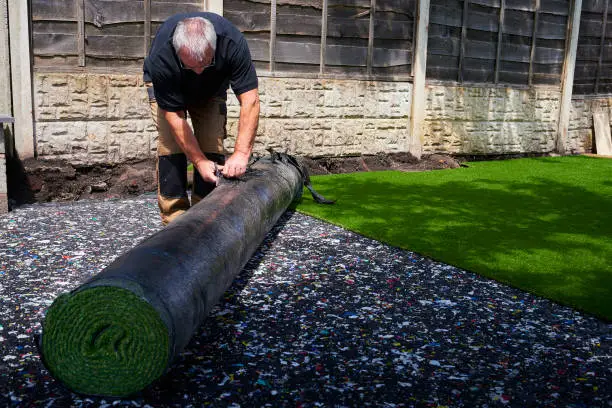In a market expected to top £6 billion by the end of 2025, the UK flooring and carpet industry is booming—but only those who adapt to evolving trends and customer demands will thrive. With intense competition, shifting buyer behaviour, and growing demand for sustainable, stylish flooring, many businesses are struggling to stand out.
This comprehensive 2025 guide shares proven, actionable strategies to increase flooring and carpet business UK—from mastering local SEO to partnering with interior designers and running high-converting ads. Whether you’re an independent retailer or a regional installer, these tactics will help you grow visibility, trust, and revenue in today’s market.
Understand the UK Market in 2025

- The UK flooring market is projected to reach over £6 billion by the end of 2025, with residential renovations and commercial developments driving steady growth. Consumers are showing a strong preference for stylish, durable, and low-maintenance options.
- Popular materials: luxury vinyl tiles (LVT) dominate urban homes due to their affordability and water resistance, while wool carpets remain popular in heritage properties for their insulation and premium look. Laminate flooring is increasingly chosen for budget home renovations.
- Regional trends: London and other major cities demand sleek, contemporary styles like herringbone patterns and grey-toned woods. Suburban and rural areas continue to favour warm-toned carpets and rustic wood aesthetics.
- B2B opportunities: commercial sectors such as student housing, care homes, hospitality refurbishments, and build-to-rent properties present ongoing installation and maintenance needs. Government retrofitting initiatives for public buildings may also offer contracts in 2025.
Optimise Your Local SEO Presence

Claim and Fully Optimise Your Google Business Profile: Ensure your profile is claimed and thoroughly optimised.
Utilise Location-Specific Keywords: Incorporate keywords such as “carpet installation in Birmingham” or “flooring shop near Leeds” to target local searchers effectively.
Encourage Customer Reviews with Photos: Prompt satisfied customers to leave reviews accompanied by photos, enhancing credibility and engagement.
Maintain Consistent NAP Across Directories: Ensure your Name, Address, and Phone number are consistent across all online directories to build trust and improve search rankings.
Leverage New GBP Features: Utilise features like Google Posts to share updates, promotions, and events directly on your profile, keeping customers informed and engaged.
Incorporate High-Quality Visual Content: Add high-resolution images and videos to showcase your products and services, as visual content significantly boosts user engagement.
Enable Messaging for Direct Communication: Activate the messaging feature to allow customers to contact you directly through your profile, facilitating prompt responses and improved customer service.
Regularly Update Business Information: Keep your business hours, services, and other relevant information up to date to provide accurate details to potential customers.
Monitor and Respond to Q&A: Actively monitor the Questions & Answers section of your profile, providing timely and informative responses to customer inquiries.
Analyse Performance Metrics: Utilise the insights provided by Google Business Profile to track performance metrics, understand customer behaviour, and refine your local SEO strategies accordingly.
Improve Website & Online Booking Features

- Make your website mobile-responsive and fast.
- Include high-quality images of your products and recent projects.
- Add clear CTAs (e.g., “Get a Free Quote”) and contact forms.
- Offer an online calculator for carpet fitting estimates.
Run Targeted Google & Facebook Ads

- Target ads by postcode, income level, and property ownership.
- Promote seasonal offers like “Free Underlay in Summer 2025.”
- Use carousel ads to show different carpet types or room transformations.
- Retarget users who visited your site but didn’t convert.
Build Partnerships with Local Builders and Interior Designers
- Approach interior designers, letting agents, property developers, and builders for recurring projects. Building long-term relationships with these professionals can lead to consistent commercial contracts and bulk orders.
- Offer referral incentives or discounted trade rates, such as 10% off repeat installations or a commission on successful leads.
- Provide marketing materials or product catalogues that they can share with clients to increase brand exposure.
- Attend local business networking events, industry expos, and property investor meetups to connect with decision-makers and stay updated on upcoming developments.
Offer Eco-Friendly and Budget-Friendly Flooring Options
- Stock products like recycled carpet tiles or bamboo flooring.
- Highlight sustainable choices in your marketing.
- Create bundles for landlords, including affordable options with installation.
Promote via Social Media & Content Marketing

- Post before/after photos and short videos on Instagram and TikTok.
- Share blog posts like “Best Carpets for Allergies in the UK” or “Top Flooring Trends 2025.”
- Engage with local community groups and promote your services.
Expand Services: Installation, Repairs, and Maintenance
- Offer carpet cleaning, re-stretching, or floor repair services.
- Train or partner with certified installers.
- Create care guides to increase post-sale value and upsell services.
Use CRM & Referral Programmes to Retain Clients

- Use a CRM to track leads, quotes, and follow-ups.
- Launch a referral programme (e.g., £50 Amazon voucher for referrals).
- Send automated reminders for carpet cleaning or re-flooring after 2-3 years.
Attend UK Trade Shows and Flooring Exhibitions
- Join events like The Flooring Show (Harrogate) and Surface Design Show (London).
- Display your products, network with suppliers, and learn about trends.
- Promote your attendance on social media to increase visibility.
Success Stories: Flooring Businesses That Grew Fast
- Example: A Manchester-based shop doubled revenue in 1 year by targeting student rentals and offering flexible weekend installation schedules to suit tenants’ availability. They also collaborated with local estate agents to gain direct access to new lettings.
- Another case: A London flooring firm added professional installation tutorial videos to their website and YouTube channel, resulting in a 60% increase in web leads. They further boosted engagement by integrating customer testimonials and ‘how-to’ blog content, which improved their organic SEO performance and brand trust.
Final Tips & Common Mistakes to Avoid
- Don’t ignore online reviews—respond to all feedback.
- Avoid pricing confusion; offer clear, competitive rates.
- Don’t skip follow-up—post-sale support builds loyalty.
FAQs
Q: How profitable is a flooring and carpet business in the UK?
A: With smart marketing and reliable service, margins can range from 25% to 50%, depending on product type.
Q: Should I invest in digital marketing for my flooring business?
A: Yes, digital ads and SEO generate long-term returns and reach more customers.
Q: What are the best-selling flooring types in 2025?
A: LVT, engineered wood, and wool carpets lead in popularity.
Q: How can I find more commercial clients?
A: Target office refits, property managers, and care homes through LinkedIn and local tenders.
Q: Is it worth selling products online?
A: Yes, especially for DIY carpets, mats, and accessories.
Conclusion
Growing a flooring and carpet business in the UK takes effort, but with the right digital tools, services, and local connections, success in 2025 is within reach. Use this guide as a roadmap to increase flooring and carpet business UK-wide by modernising your operations, reaching more customers, and staying ahead of the competition.



